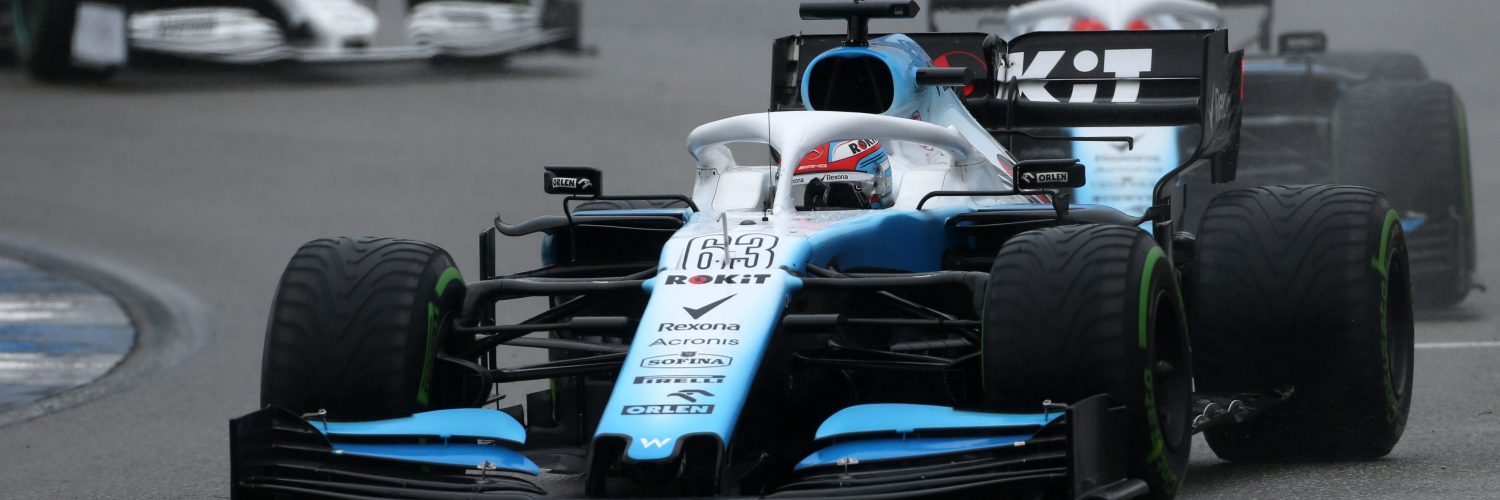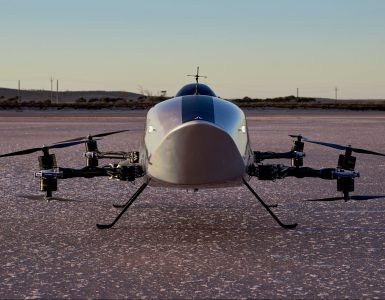It is coincidental that Williams gained its first point of 2019 at the German GP, the event where it brought its major upgrade package to the FW42, but it is a good omen. By the team’s own admission, the 2019 season has been a challenge, but the engineering team at Grove have worked hard to bring new parts to the car to meet that challenge.
Over the past two races, Williams has brought a major package of updates to the FW42, split between a Silverstone upgrade to the sidepod fronts and then the German update with sidepods, floor, bargeboards and rear wing.
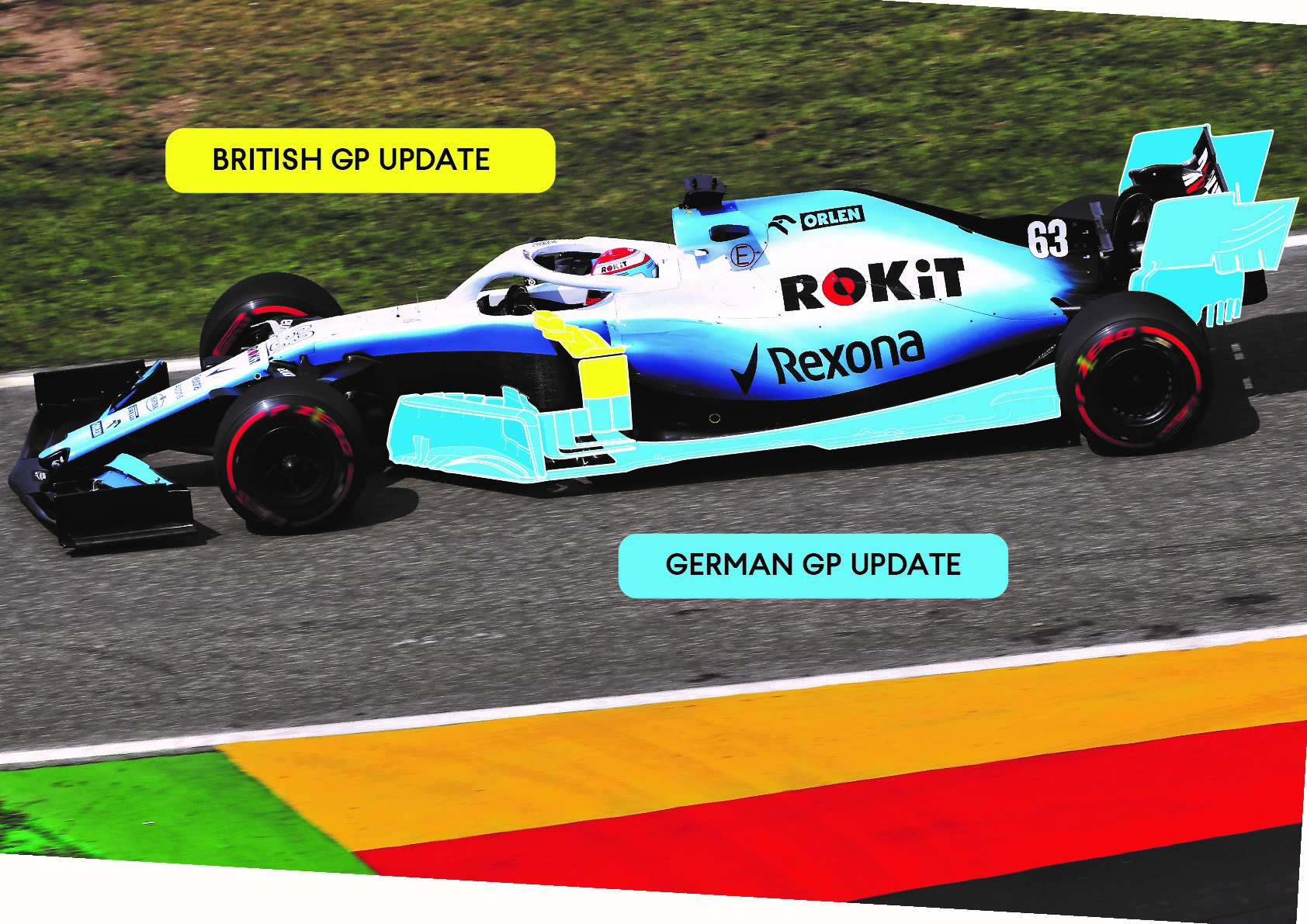
Silverstone
Up until Silverstone, Williams were running a V2.0 of the sidepod front design, this being the Melbourne spec with revisions to the Testing bodywork, that had changes made to the mirrors. The sidepod front incorporates the inlet to the sidepod itself, as well as the vanes wrapped around the sidepod and the rear view mirrors, that in addition to providing the driver a look at what’s behind, have become a useful aerodynamic aid.
If we take the mirror package first, the team have taken a route similar to the majority of other teams, with a mirror design that has an aerodynamic flap wrapped around the mirror itself. This is a legal interpretation of the rules, which also allows the two mountings for the mirror housing to be shaped for aero gain.
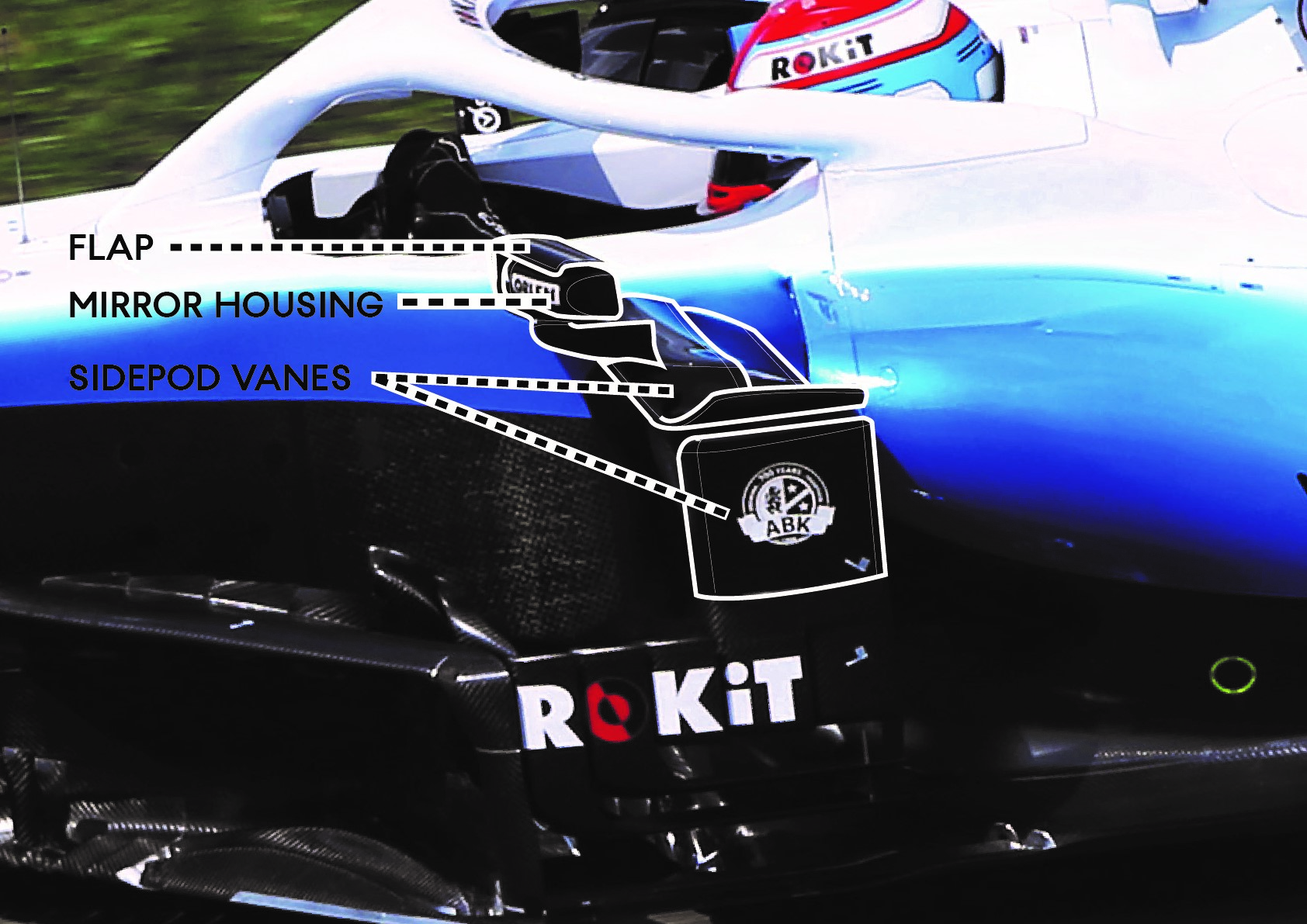
So, we see one mounting reach sideways back to the monocoque as a horizontal vane, then another underneath leading back to the sidepod as a vertical vane. Both of these, along with the flap over the mirror seek to redirect the airflow down over the sidepod top, which is required as the sidepods sloping surface would otherwise see the airflow try to detach from its surface, rather than running smoothly along it.
Tackling the same airflow separation issue are the other vanes wrapped around the sidepod front. These used to be joined with a radiussed 90° bend, but the Silverstone spec splits them, the upper vane ending with a downcurved profile before flicking up at its outer tip, then the vertical vane being truncated, both being used to keep the airflow attached over the sidepods.
Hockenheim
Following on from the previous race, Germany brought the larger package of changes, to add to the Silverstone parts that were retained on the car. These changes brought revised bargeboards, sidepods, floor and rear wing.
Taking the bargeboards as the first set of changes, these were neatly added to the Silverstone parts, as there is a horizontal split in the assembly of the parts. The upper Silverstone parts were therefore bolted to the Hockenheim parts forming the lower part of the bargeboard assembly.
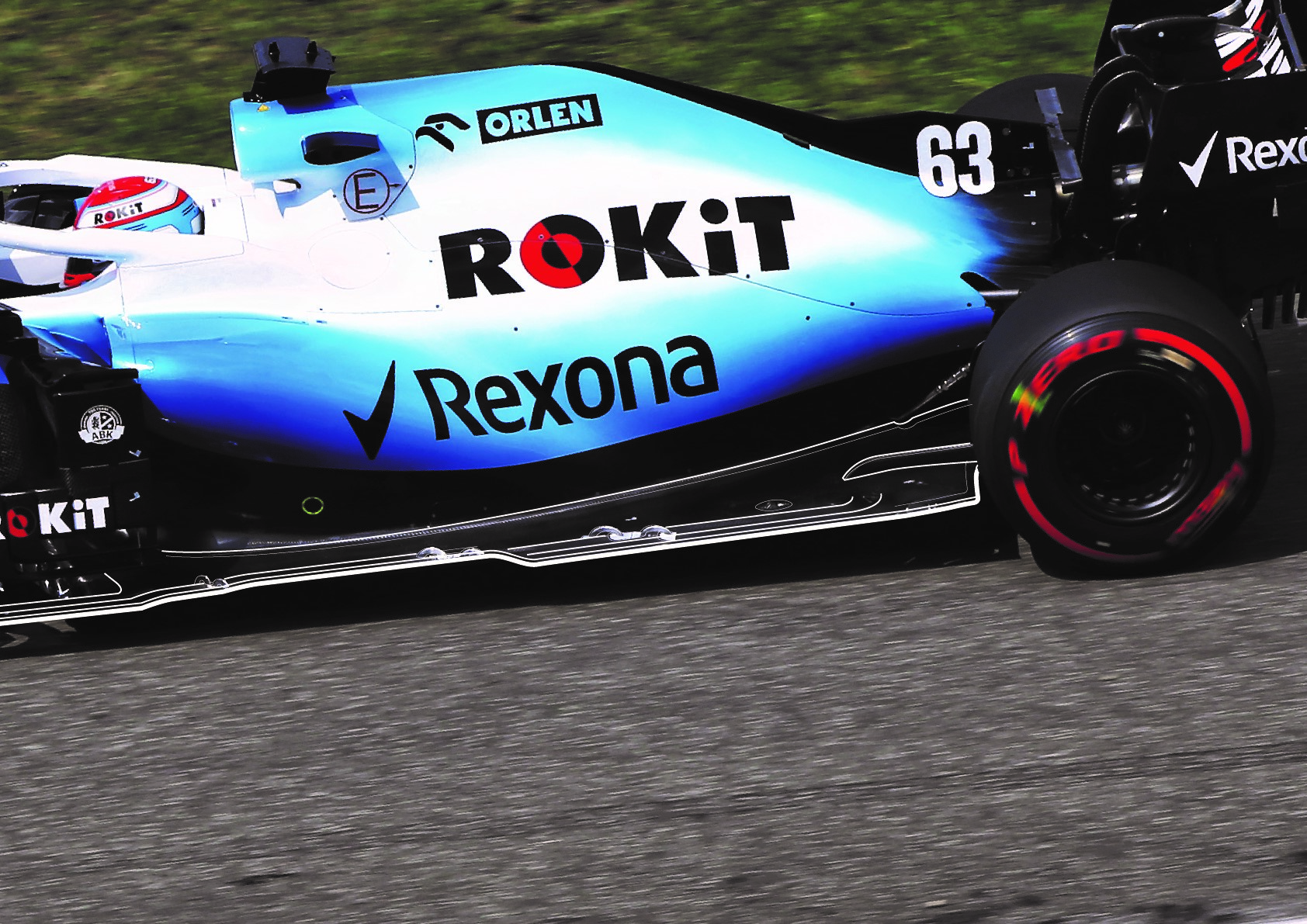
Bargeboards have been used in F1 since the late eighties and their function is often misunderstood, although they have grown in complexity over the intervening years. Initially, they were a simple solution to push the front tyre wake awake from the centre of the car, allowing a cleaner airflow along the bodywork. This allows the diffuser and rear wing to run in cleaner air, making them create more downforce for the drag they create. This improvement in lift (downforce)/drag efficiency means the race engineers can run either less rear wing angle or keep the same downforce level bringing more top speed. Or, vice versa, keep the drag level and top speed and run more rear wing angle for greater downforce through the corners.
Although a part of the car’s design throughout the recent era, the technical regulations were opened up for greater bargeboard development in 2017 and its for this reason we see the massively complex designs raced today.
In addition to the outwash they create to push the front tyre wake away, they also have a major effect on the airflow passing under the floor and on to the diffuser. This redistribution of pressure is a major reason that the underfloor can create so much downforce. Lastly the airflow through the bargeboards tends to rise upwards, as its just passed through the front wing, some elements of the bargeboard package redirects the airflow downwards towards the sidepods undercut, which sees higher pressure created over the floor for greater downforce.
In Germany, the FW42 bargeboard package was almost entirely new. While teams never throw away every aspect of a parts design, as they tend to evolve parts over the course of time, the new spec parts are substantially different in every area.
The main vertical elements of the bargeboards, which are used for the outwash effect are revised. They are split into more sections along the top edge, each split in the surface creates a vortex that joins to create a powerful airflow pushing outwards.
Along the bottom of the bargeboards, at an area known as the footplate, the fins and curved sections are different, as is the triangular section of floor jutting out, unseen behind the vertical vanes. These are all directing airflow under the floor, to feed the under floor’s leading edge and diffuser with airflow of the right pressure and direction.
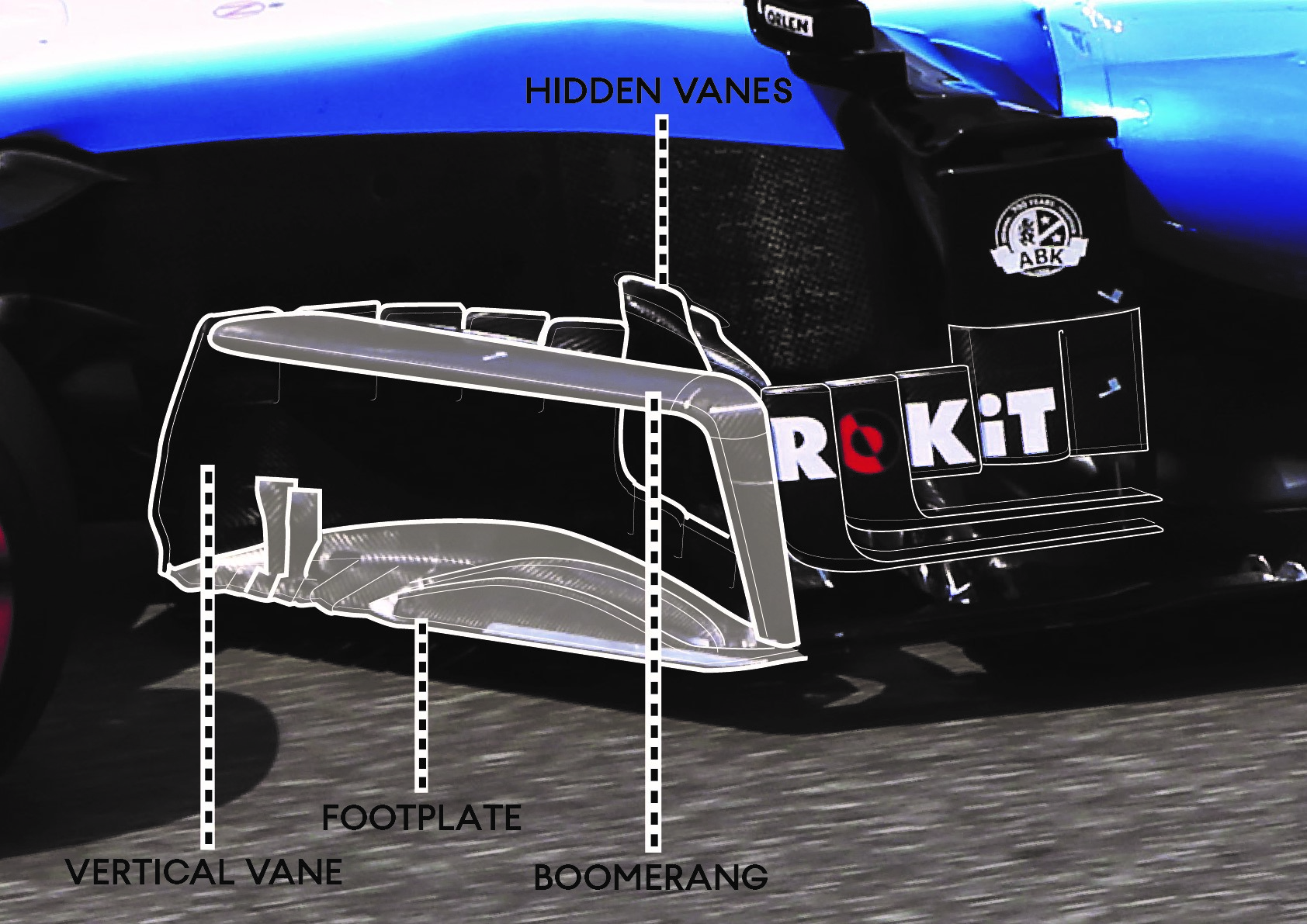
Passing over the top of the bargeboards is a return of the boomerang wing; Williams had run this in 2018 but was missing from the 2019 package. It’s this wing that creates the downwash towards the sidepod undercut. The new boomerang neatly joins with the vanes mounted to the sidepod front. Mounted to the section of triangular floor behind the bargeboard there are two vanes that curve over to meet the side of the chassis. This “r” shape allows these vanes to work both with the outwash effect and the curved top sections create a little downwash to aid the boomerang.
While the floor underneath features detail changes to increase the expansion of airflow into the diffuser, the floor’s long exposed edges, are obviously different. As teams seek to keep the front tyre wake away from the central bodywork, any means to help push this airflow outwards and keep a cleaner/stronger airflow passing over the car, is useful. In recent years, as well as the boom in bargeboard development, the floor edge has become a useful tool as well. As pressure builds up on top of the floor and tends to flow sideways. Teams exploit this and create long slots with aerofoil cross sections along the floor edge. These slots create a strong vortex moving outwards and join with the front wing and bargeboards in pushing the front tyre wake away. Williams have therefore gone even further with their new floor and created longer slots, with metal supports that also help in directing airflow outboard.
Then lastly, at the very back, the rear wing endplate was also modified, with Williams adding several new fins to the crease in the endplate, plus increasing the size and number of fins to the bottom edge. As a wing creates downforce from the high pressure above and low pressure below, any means to further expand the airflow and reduce the pressure below then wing helps creates more load on the wing. These fins help this effect by allowing the airflow to expand underneath the wing.
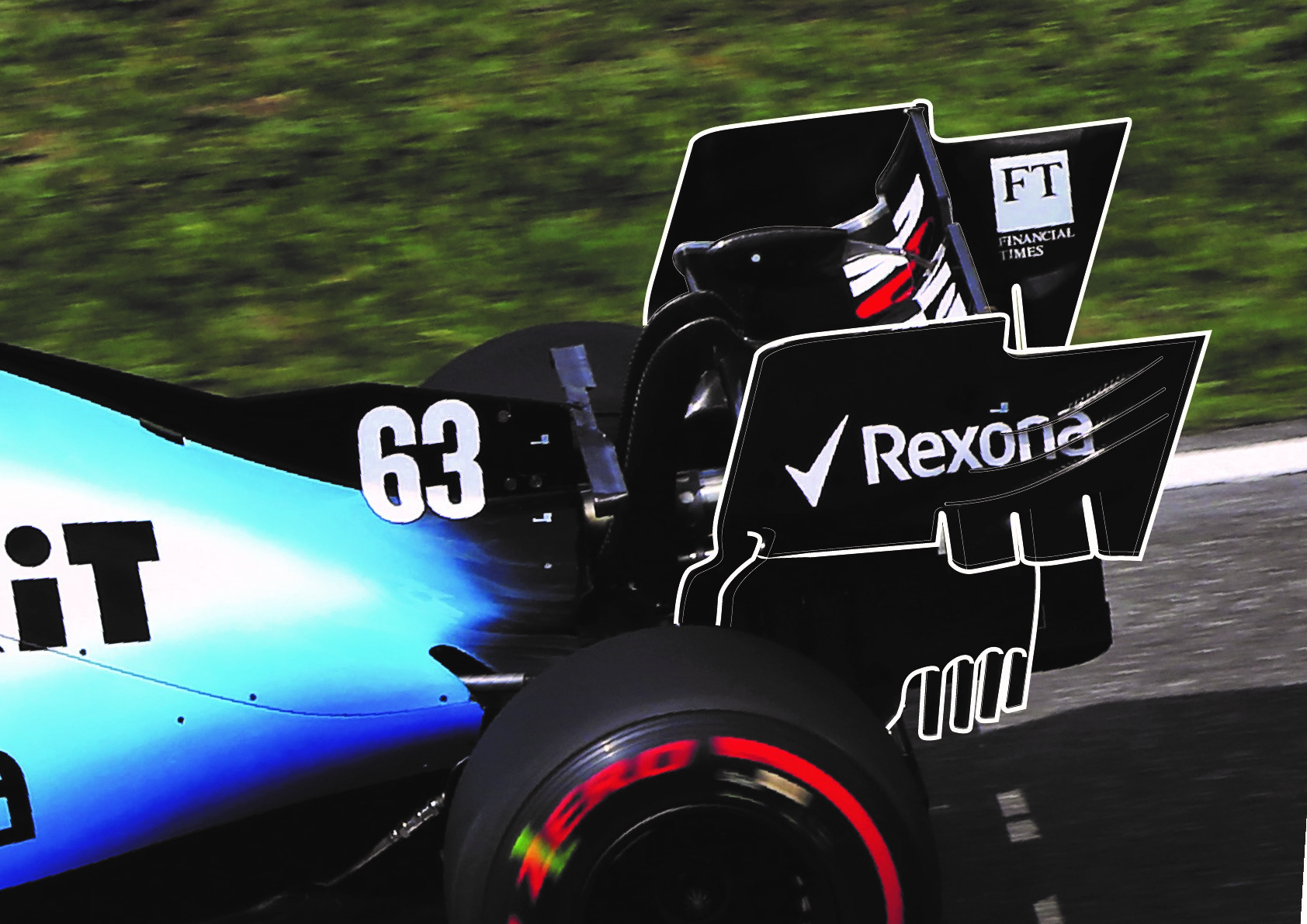
While there may be more updates in the upcoming races, this is already a huge update for the Williams. Steps have been taken to boost downforce and reduce drag, with valid design ideas already proven by other teams. Now the circus moves on to Hungary, Spa and Monza, tracks which will test the updated FW42 in different ways, low speed and high speed, high downforce and low downforce.

